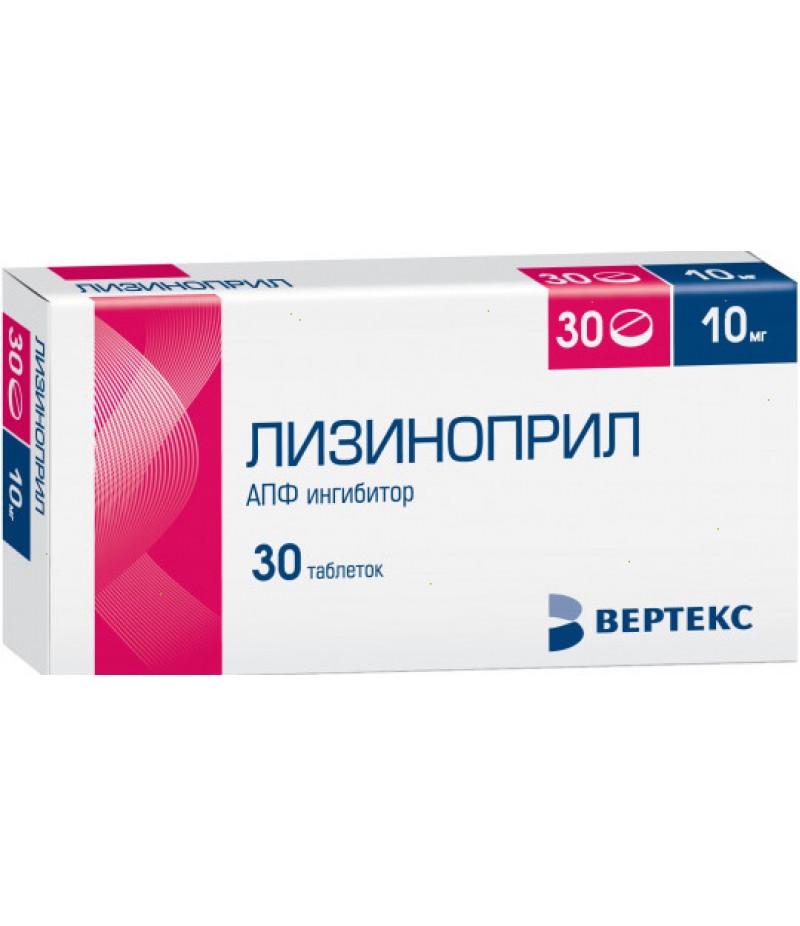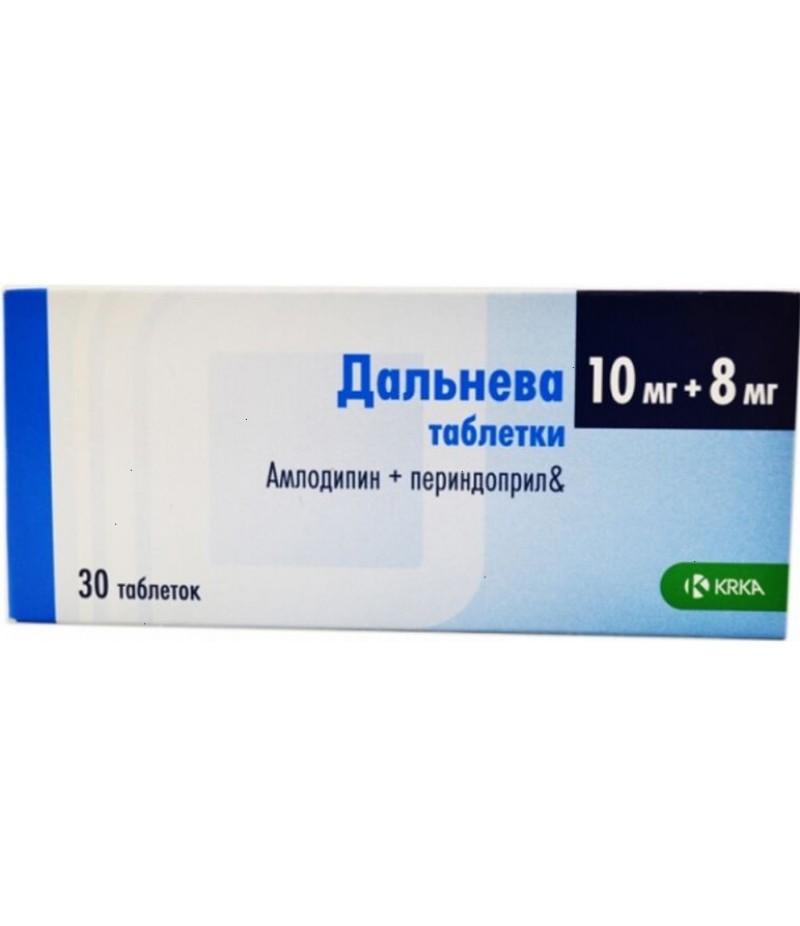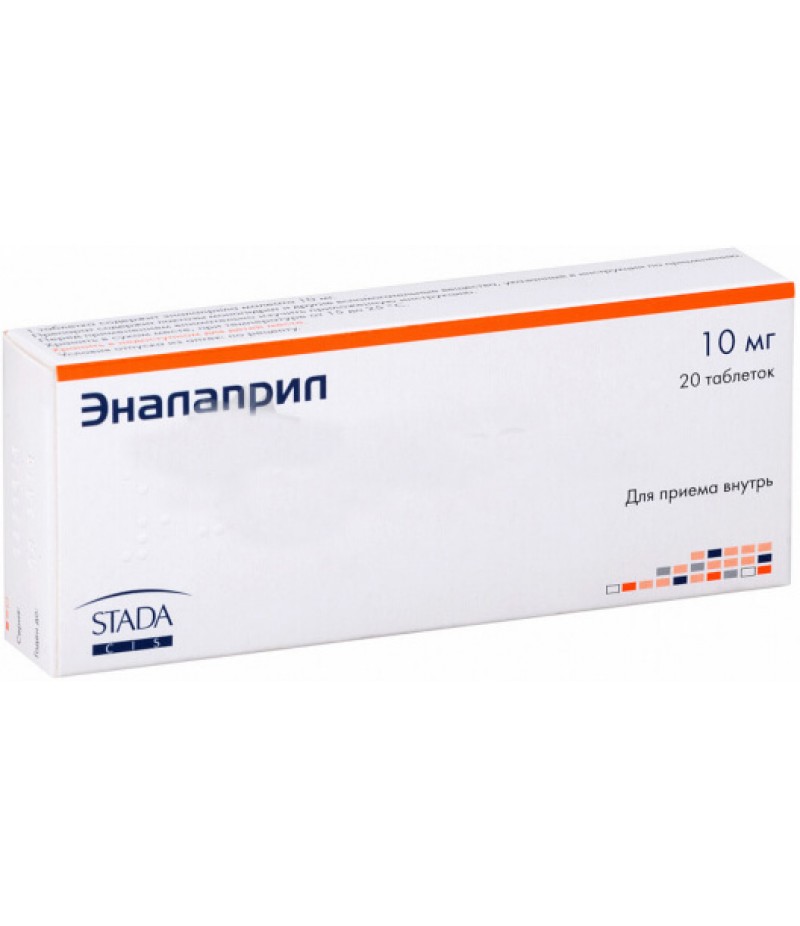Lisinopril tabs 10mg #30
- $6.35
- 3 or more $6.23
- 5 or more $6.19
- Availability:In Stock
You can buy Lisinopril hereLisinopril tabs instruction for useCompositionThe main component of the drug is lisinopril dihydrate. But depending on the manufacturer of the drug, the composition of the additional substances can be di..
You can buy Lisinopril here
Lisinopril tabs instruction for use
Composition
The main component of the drug is lisinopril dihydrate. But depending on the manufacturer of the drug, the composition of the additional substances can be different.
Ukrainian company Avant produces lisinopril with such auxiliary components as corn starch, calcium hydrophosphate, iron oxide, mannitol, magnesium stearate.
A Russian manufacturer ALSI Pharma produces a product with the following additional components: pregelatinized starch, silicon dioxide colloid, talc, lactose monohydrate, microcrystalline cellulose, magnesium stearate.
In addition, there are known forms of release of the drug, such as Lisinopril-Ratiofarm, Lisinopril-Astropharm, Lisinopril Teva, Lisinopril Stada. They have the following additional components:
Lisinopril-Astropharm - corn starch, silicon dioxide colloid, mannitol, calcium hydrophosphate, magnesium stearate;
Lisinopril-Ratiofarm - mannitol, calcium hydrophosphate, magnesium stearate, pregelatinized starch, croscarmellose sodium (20 mg tablets also contain PB-24824 dye, and the drug in 10 mg tablets is PB-24823 dye).
Lisinopril Stade has as an active ingredient lisinopril hydrate. In addition, the following additional substances: pregelatinized starch, silicon oxide, colloidal anhydrous, mannitol, magnesium stearate, corn starch, calcium phosphate disubstituted dihydrate.
Form of issue
Pills.
pharmachologic effect
The drug has antihypertensive, cardioprotective, vasodilating and natriuretic effect on the human body.
Pharmacodynamics and pharmacokinetics
Lisinopril tablets block ACE, increase the content of endogenous vasodilating PG and prevent the transfer of angiotensin I to angiotensin II. They also reduce the conversion of arginine-vasopressin and endothelin-1, reduce the afterload on the myocardium, the total peripheral resistance of the vessels, the pressure in the pulmonary capillaries and systemic blood pressure. Patients with heart failure increase myocardial tolerance to exercise and cardiac output. Increase plasma renin activity.
The drug blocks the tissue renin-angiotensin system of the heart, prevents the appearance of myocardial hypertrophy and dilatation of the left ventricle, or helps in their disappearance.
The effect of the drug manifests itself after about 60 minutes, increases for 6-7 hours and lasts for a day. The maximum hypotensive effect is manifested when the course is a few weeks.
The active substance is absorbed by about 25%. The time of ingestion does not affect the absorption. The connection with plasma proteins is low. The active substance is not biotransformed and excreted by the kidneys in an unchanged form. Half-life is 12 hours.
Indications for use of lisinopril
This medicine can not be taken without the appointment of a specialist. Indications for use Lisinopril may be different. How to take and what pills will help in each case, only the doctor knows.
Typically, lisinopril tablets have the following indications for use:
arterial hypertension;
chronic heart failure;
diabetic nephropathy in the case of insulin-dependent and type II diabetes mellitus;
acute myocardial infarction without arterial hypotension.
Contraindications
The drug should not be taken with increased sensitivity to its components, lactation and pregnancy.
It is undesirable to prescribe this remedy when:
hyperkalemia;
anaphylactoid reactions;
collagenoses;
cerebrovascular insufficiency;
disorders in the work of the kidneys and liver;
bilateral stenosis of the renal arteries;
transplanted kidney;
gout;
old age;
Quincke's edema in the anamnesis;
bone marrow depression;
hypotension;
obstructive changes that prevent the outflow of blood from the heart;
hyponatremia, as well as when eating with limited sodium intake;
stenosis of the artery of a single kidney;
hyperuricemia;
childhood.
Side effects
Side effects may be different, they arise from different systems and bodies:
nervous system - irritability, headache, ataxia, increased fatigue, transient impairment of cerebral circulation, tremor, drowsiness, visual impairment, confusion, nervousness, fainting, peripheral neuropathy, memory loss, dizziness, insomnia, paresthesia, convulsions, tinnitus;
gastrointestinal tract - dry mouth, heartburn, vomiting, flatulence, abdominal pain, gastritis, indigestion, nausea, diarrhea, constipation, spasms, hepatotoxicity, pancreatitis;
musculoskeletal system - arthralgia, myalgia, arthritis, neck and back pain;
respiratory system - malignant lung tumors, embolism and pulmonary infarction, dry cough, asthma, painful respiratory sensations, hemoptysis, laryngitis, pharyngitis, epistaxis, paroxysmal postural dyspnea, infiltration, pleural effusion, rhinitis, bronchitis, bronchospasm, sinusitis, runny nose;
urogenital system - acute renal failure, problems with kidney function, pyelonephritis, oliguria, uremia, impotence, dysuria, anuria, edema, decreased libido;
skin - hives, alopecia, pemphigus, Lyell's syndrome, photosensitivity, rash, injuries and infections of the skin, Stevens-Johnson syndrome.
In addition, the following manifestations are possible: the development of infections, weight loss, sweating, diabetes mellitus, an increase in the titer of antinuclear antibodies and urea levels, gout, an increase in creatinine, hyperkalemia, hyperuricemia, fever, allergy, dehydration, hyponatremia.
If any side effects are found, you need to urgently consult a specialist.
Instructions for use of lisinopril (Method and dosage)
The medication is taken daily 1 time in the morning, regardless of food intake. Do this at the same time, while washing some liquid.
The exact dosage and the scheme of therapy is selected by a specialist individually. It depends on what Lisinopril is applied, what preparations are taken with it and what is the condition of the kidneys.
With arterial hypertension in the case of treatment without other antihypertensive drugs, the dosage is 2.5 mg once a day. For the most effective 2-4 weeks of therapy. Only then you can increase the daily dosage to a maximum of 20 mg. The daily dose should not be more than 40 mg.
If the desired antihypertensive effect is not achieved, you must additionally take another antihypertensive drug of another pharmacotherapeutic group.
In the case of acute myocardial infarction, if a medicine called lisinopril was prescribed, the instruction for use informs that it should be taken within 24 hours after the first symptoms of the disease manifest. The initial dosage is 5 mg once a day. It can be increased to 10 mg. People with arterial systolic pressure up to 120 mm Hg. Art. shows the use of 2.5 mg per day. And when arterial hypotension occurs, a single dose does not exceed 5 mg (if necessary, it can be reduced). If within 60 minutes after taking BP to 90 mm Hg, tablets are canceled. At a dosage of 10 mg, therapy for 6 weeks is recommended.
In the case of heart failure, the daily initial dosage is 2.5 mg. It can be gradually increased depending on the individual indications of the patient. Therapeutic daily dosage is 20 mg.
In the case of insulin-dependent diabetes mellitus and nephropathy, therapy is started with low doses and is under careful monitoring by a specialist. The initial daily dosage for type II diabetes is 10 mg. It is forbidden to exceed the daily dose of 20 mg.
With renal failure, dosage adjustment is required depending on the CK:
30-70 ml / min - take 5-10 mg / day;
10-30 ml / min - take 2.5-5 mg / day;
up to 10 ml / min - you need to take 2.5 mg / day.
A daily dose of 20 mg can not be exceeded, and for people with CK up to 30 ml / min the maximum daily dosage is 10 mg.
In some cases, it is also possible to extend the interval between doses from one to two days.
There are also some changes in the scheme of taking the drug depending on the manufacturer. So the instruction on the use of Lisinopril-Astropharm reports the following daily dosages depending on the diagnosis:
Arterial hypertension - to start, the dosage should be 10 mg per day. In this case, after the first application, a significant decrease in blood pressure can occur. In this case, the initial dosage is 2.5-5 mg. Therapy should be under the supervision of a specialist. The maintenance daily dosage is 20 mg. If the proper effect is not achieved in 14-28 days, it can be increased. But you can not exceed the daily dosage of 80 mg;
chronic heart failure - the drug can be used as a component of therapy with diuretics, beta-blockers and digitalis preparations. At the beginning of treatment, a daily dosage of 2.5 mg is prescribed. The medicine should be used under the supervision of a specialist. It is possible to increase the dose, but not more than 10 mg and not earlier than 14 days. The maximum daily dosage should not exceed 35 mg. The exact dose depends on the individual parameters of the patient;
acute myocardial infarction - the drug is taken as a component of therapy with thrombolytic drugs, beta-blockers and acetylsalicylic acid. The dosage of Lisinopril-Astropharmum in the first two days is 5 mg. The course should start when the first symptoms occur and if the systolic blood pressure does not exceed 100 mm Hg. Art. Two days later, a daily dosage of 10 mg is prescribed. If the arterial pressure is up to 120 mm Hg. In the first 3 days you need to take 2.5 mg. If prolonged arterial hypotension occurs, therapy is immediately stopped. The course is designed for 6 weeks, after which the patient's condition should be evaluated again for further treatment;
Diabetic nephropathy - the initial dosage is 10 mg per day. If necessary, the dose rises to 20 mg.
For any diagnosis in the case of renal failure, the dosages are corrected in the KK dependence. So the initial dose can be:
CK up to 10 ml / min - take 2.5 mg / day;
KK 10-30 ml / min - take 2.5-5 mg / day;
KK 31-80 ml / min - take 5-10 mg / day.
Instruction for use Lisinopril-Ratiofarm, Lisinopril Teva, Lisinopril Stida has no significant differences in the regimen of admission.
Overdose
When an overdose, as a rule, acute arterial hypotension appears. As a treatment, physiological saline is administered. Symptomatic therapy is performed.
In addition, shock, hyperventilation, acute renal failure, bradycardia, cough, electrolyte imbalance in the blood, tachycardia, palpitation, dizziness, a sense of anxiety are possible.
The drug must be canceled. If the patient is conscious, rinsing the stomach, lay the patient on his back with a low headrest, raised legs and a head sideways. In addition, enterosorbents are given.
When taking medication in especially high doses, the patient should be immediately hospitalized. In a hospital, treatment is conducted to maintain normal perfusion pressure, circulation, respiration, restore the volume of circulating blood and normal kidney function. Effective hemodialysis. It is imperative to monitor vital signs, as well as the level of creatinine and electrolytes in serum.
Interaction
Taking the drug together with antihypertensive drugs can provoke an additive antihypertensive effect.
Potassium-sparing diuretics, substitutes for edible salt with potassium, and also drugs with potassium increase the possibility of developing hyperkalemia.
Combination with ACE blockers and NSAIDs increases the likelihood of kidney dysfunction. In rare cases, hyperkalemia is also possible.
And the application in conjunction with loop and thiazide diuretics is fraught with increased antihypertensive effect. At the same time, the risk of renal dysfunction significantly increases.
Indomethacin or agents with estrogen in combination with lisinopril lead to a decrease in the antihypertensive effect of the latter. And simultaneous intake of insulin and hypoglycemic drugs can cause hypoglycemia.
The combination with clozapine leads to an increase in its content in plasma. With the simultaneous intake of lithium carbonate, its serum level increases. This may be accompanied by symptoms of lithium intoxication.
The drug also increases the effect of ethanol. The symptoms of alcoholic intoxication are increasing. At the same time, it is possible to increase the hypotensive effect of lisinopril, so it is necessary to avoid alcoholic drinks during therapy with this drug or not to take it within a day after drinking alcohol.
Use of this medication together with narcosis drugs, narcotic analgesics, antidepressants, muscle relaxants with hypotensive effect, and also hypnotics leads to an increase in the hypotensive effect.
Thrombolytics increase the likelihood of arterial hypotension. This combination should be prescribed with caution and carefully monitor the patient's condition.
Sympathomimetics to a significant extent weaken the hypotensive effect of the drug. A combination with drugs that have a myelosuppressive effect increases the risk of agranulocytosis and / or neutropenia.
The simultaneous use with Allopurinol, immunosuppressants, Procainamide, cytostatics, GCS can cause leukopenia.
With dialysis therapy, anaphylactoid reactions are possible in the case of high-flow polyacrylonitrile metal sulfonate membranes.
Storage conditions
Keep the medicine in a dry place, inaccessible to young children, at temperatures up to 250C.
Shelf life
Lisinopril, Lisinopril Stada and Lisinopril-Astropharm are valid for 3 years. Lisinopril-Ratiofarm can be stored for a maximum of 4 years. And the shelf life of Lisinopril Teva is 2 years.
Reviews about Lisinopril
The patients' comments characterize this drug as an effective remedy for chronic heart failure, as well as for diabetic nephropathy, hypertension and after myocardial infarction.
Specialists report that a full therapeutic effect can be noticed after 14-28 days after the beginning of the admission. The doctors' comments are also mostly positive.
Negative views are not many. Negative reviews about Lisinopril tell, mainly, about the appearance of side effects. Most often reported increased fatigue, dizziness, nausea, headache, dry cough, diarrhea.
Reviews of Lisinopril Teva, as well as synonyms of the drug from other manufacturers, are also mostly positive. However, patients also note some side effects. But it is unambiguous to attribute them to this ACE inhibitor in most cases, as it is often used in combination with other agents that also have their own side effects.





